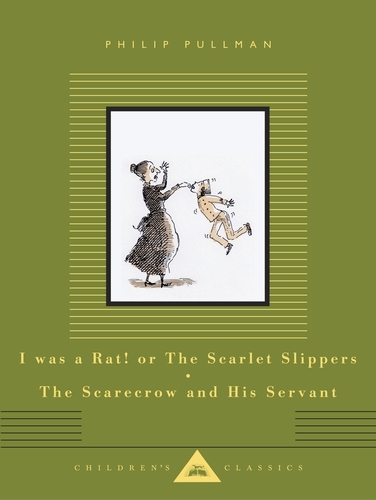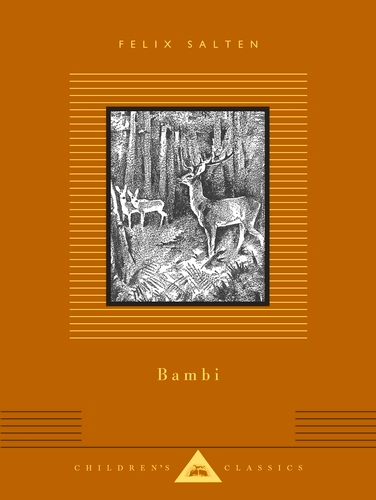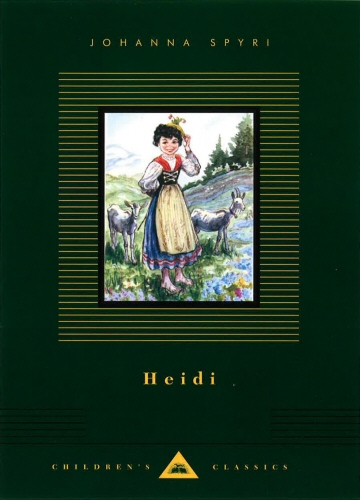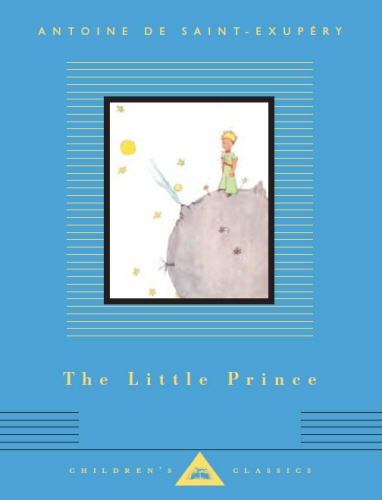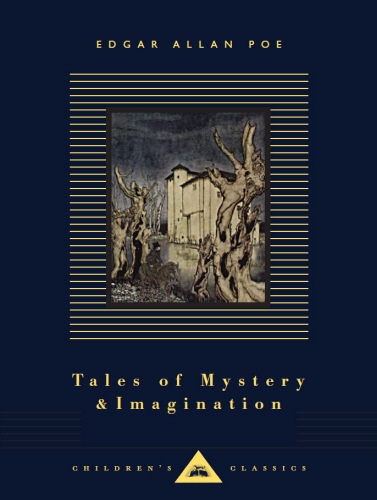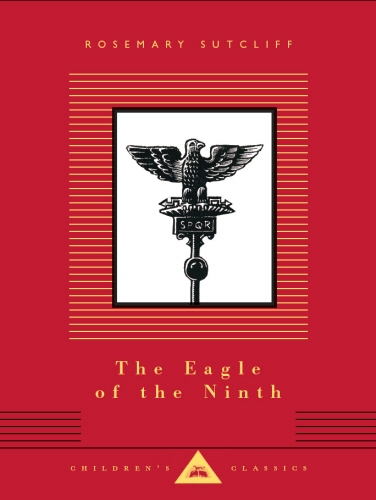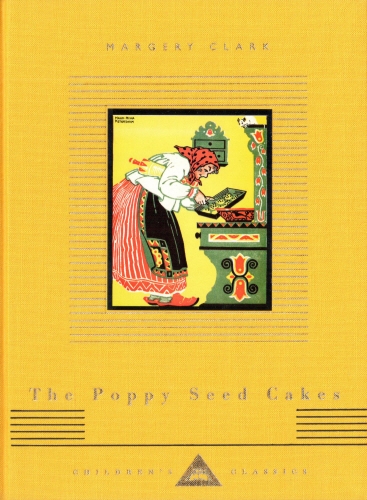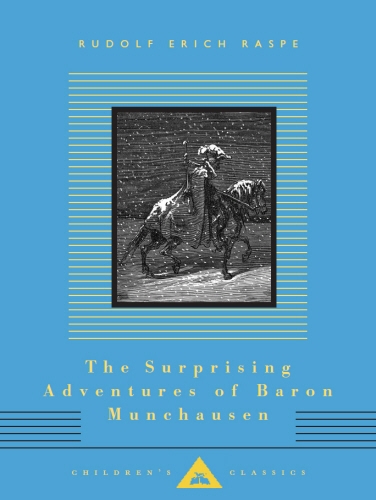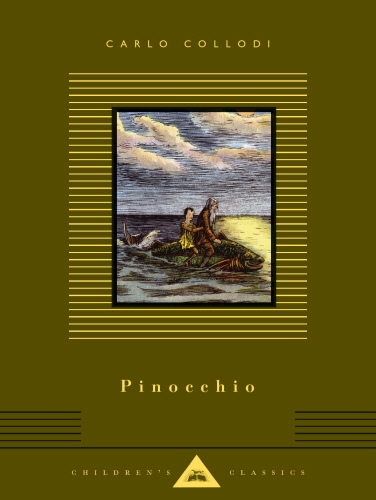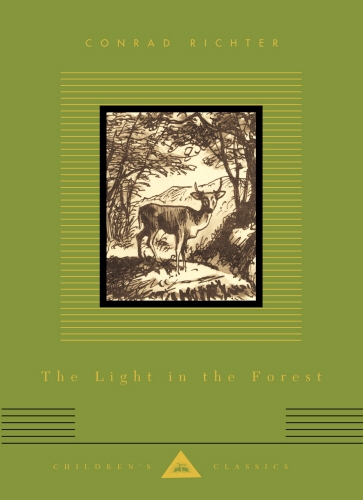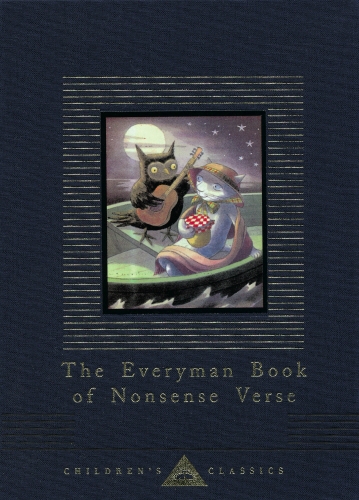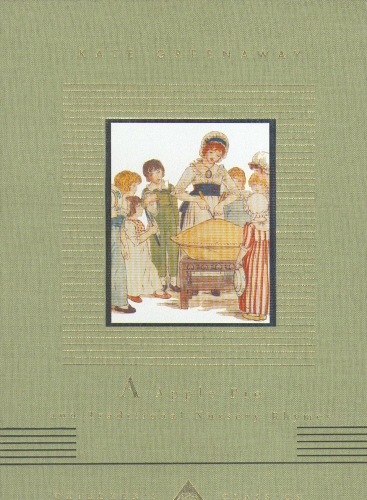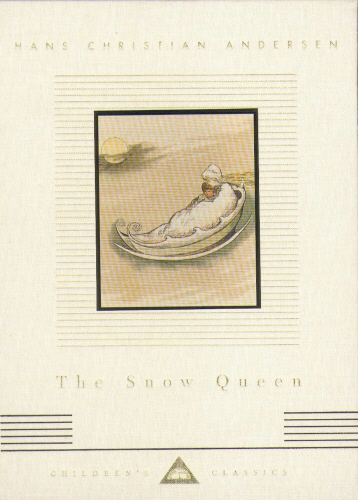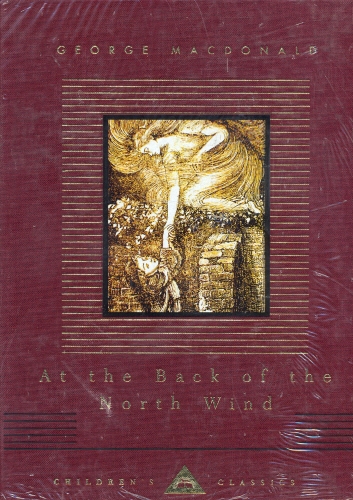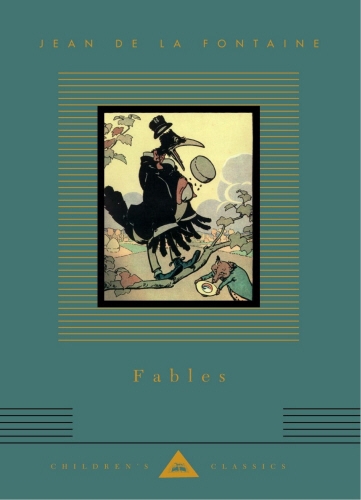Everyman's Library CHILDREN'S CLASSICS
63 books in this series
Everyman's Children's Classics has more than 50 titles in print. It offers the finest editions currently available of the world's greatest children's books in handsome, full cloth hardcover bindings.
The library brings back into print major illustrators such as Ivan Bilibin, Kate Greenaway, Arthur Rackham, Nicolas Bentley, Walter Crane, Aubrey Beardsley, Edward Ardizzone, W.Heath Robinson and Mervyn Peake.
The library brings back into print major illustrators such as Ivan Bilibin, Kate Greenaway, Arthur Rackham, Nicolas Bentley, Walter Crane, Aubrey Beardsley, Edward Ardizzone, W.Heath Robinson and Mervyn Peake.
I Was a Rat! Or, The Scarlet Slippers and The Scarecrow and his Servant
‘I was a rat!’ So insists a scruffy boy named Roger. Maybe it’s true, but what is he now? A terrifying monster running wild in the sewers? The Daily Scourge is sure of it. A victim of ‘Rodent Delusion’? The hospital nurse says yes. A lucrative fairground attraction? He is to Mr. Tapscrew. Or is Roger just an ordinary little boy? Only three people believe this version of the story, and it may take a royal intervention–and a bit of magic–to convince everyone
else. A playful parody of the press, I Was a Rat! is a magical weaving of humour, fairy tale, and adventure.
When, in A Scarecrow and His Servant, a bolt of lightning brings Scarecrow to life, he proves to be a courteous but pea-brained fellow with grand ideas. He meets a boy, Jack, who becomes his faithful servant and the two embark upon a terrifying series of adventures–including battles, brigands, broken hearts, and treasure islands. But little does the Scarecrow know that he is being followed by a family who desperately wishes he’d never sprung to life.
Two stories of myth, magic and adventure from the master teller of tales.
else. A playful parody of the press, I Was a Rat! is a magical weaving of humour, fairy tale, and adventure.
When, in A Scarecrow and His Servant, a bolt of lightning brings Scarecrow to life, he proves to be a courteous but pea-brained fellow with grand ideas. He meets a boy, Jack, who becomes his faithful servant and the two embark upon a terrifying series of adventures–including battles, brigands, broken hearts, and treasure islands. But little does the Scarecrow know that he is being followed by a family who desperately wishes he’d never sprung to life.
Two stories of myth, magic and adventure from the master teller of tales.
The Firework-Maker's Daughter, Clockwork, or All Wound Up
A must-have for every child's library: two enchanting tales by the best-selling author of Northern Lights, in a special hardcover omnibus edition with newly colourised illustrations.
With a delightful and unique introduction from the author- especially for this beautiful Everyman's Library volume.
In The Firework-Maker’s Daughter, young Lila has learned from her father almost all there is to know about his profession—but he insists upon holding back the final secret. With the help of her friend Chulak, Lila discovers that anyone who wants to be a true firework-maker must face down the Fire-Fiend of Mount Merapi. It is only after Lila has set off on her quest that Chulak discovers the other half of the secret—and without it, Lila will perish. In the company of Hamlet, a talking white elephant, Chulak sets off to find Lila before it's too late.
Clockwork features an apprentice clockmaker who is tempted to sell his soul. As the townspeople of Glockenheim gather on the eve of the annual unveiling of a new figure for the town clock, Karl, the apprentice, confides to Fritz, a storyteller, that he has failed his task to create one. Fritz, in his turn, has no idea how to finish the new story he has begun concocting, which he calls “Clockwork.” He begins to tell it anyway, only to see its dangerous antagonist materialize in front of the two boys and offer Karl a Faustian pact.
Real life and storytelling merge, and destruction must be narrowly averted, in this unusual and suspenseful tale of the power of creativity.
With a delightful and unique introduction from the author- especially for this beautiful Everyman's Library volume.
In The Firework-Maker’s Daughter, young Lila has learned from her father almost all there is to know about his profession—but he insists upon holding back the final secret. With the help of her friend Chulak, Lila discovers that anyone who wants to be a true firework-maker must face down the Fire-Fiend of Mount Merapi. It is only after Lila has set off on her quest that Chulak discovers the other half of the secret—and without it, Lila will perish. In the company of Hamlet, a talking white elephant, Chulak sets off to find Lila before it's too late.
Clockwork features an apprentice clockmaker who is tempted to sell his soul. As the townspeople of Glockenheim gather on the eve of the annual unveiling of a new figure for the town clock, Karl, the apprentice, confides to Fritz, a storyteller, that he has failed his task to create one. Fritz, in his turn, has no idea how to finish the new story he has begun concocting, which he calls “Clockwork.” He begins to tell it anyway, only to see its dangerous antagonist materialize in front of the two boys and offer Karl a Faustian pact.
Real life and storytelling merge, and destruction must be narrowly averted, in this unusual and suspenseful tale of the power of creativity.
Bambi
Bambi, a Life in the Woods is a 1923 Austrian coming-of-age novel written by Felix Salten - now published as a beautiful hardback edition in the Everyman's Library Children's Classics series.
The novel traces the life of Bambi, a male roe deer, from his birth through childhood, the loss of his mother, the finding of a mate, the lessons he learns from his father, and the experience he gains about the dangers posed by human hunters in the forest. It is also, in its most complete translation, seen as a parable of the dangers and persecution faced by Jews in Europe.
The novel traces the life of Bambi, a male roe deer, from his birth through childhood, the loss of his mother, the finding of a mate, the lessons he learns from his father, and the experience he gains about the dangers posed by human hunters in the forest. It is also, in its most complete translation, seen as a parable of the dangers and persecution faced by Jews in Europe.
Heidi
When Heidi, a five-year-old orphan, is dumped on her reclusive grandfather who lives on a remote mountainside above a Swiss village, he is none too pleased by her arrival. But Heidi quickly wins him over with her cheerful disposition and kindness, and thoroughly enjoys her new life, spending the summer days roaming the Alpine pastures with young Peter the goatherd. Three years later, this rural idyll is cruelly interrupted when her aunt fetches Heidi away to the city as a hired companion for Clara, a rich girl who is disabled. Clara adores her new friend, but the family's strict housekeeper tries to repress Heidi's high spirits and she becomes ill, pining for her mountain home. The resolution of Heidi's dilemma transforms the lives of everyone around her and has entranced readers for generations with its vision of the joys of country life and the power of love and friendship.
The Little Prince
Written during World War II, The Little Prince tells of the friendship between the narrator, an aviator stranded in the Sahara desert, and a mysterious boy whom he encounters there. Ruler of a tiny asteroid of which he is the only inhabitant, the Little Prince chats disarmingly about his curious adventures in space and since arriving on earth; of his distant home and of his love for a beautiful and capricious rose, to whom he longs to return. A moving and deceptively simple tale, it was described by Saint-Exupéry as a children's story for adults, and it works on several levels as an allegory of his own life, or of the human condition. Children love it for its deadpan fantasy, for its sense of amused bafflement at the grown-up world and for the author's attractive watercolour illustrations which are an integral part of the book.
Tales of Mystery and Imagination
Arthur Rackham (1867-1939) was one of the leading illustrators from the golden age of British book illustration. Fairy-tale and fantasy were his forte and in later life he responded to the dark stimulus of Poe's gothic tales with gleeful appreciation of their macabre and otherworldly qualities, claiming afterwards that he had quite succeeded in frightening himself! For lovers of the thrilling and chilling, young and old, Poe's sensational stories cannot fail to hit the spot. This collection contains the best of his prose works, including of course the well-known masterpieces 'The Fall of the House of Usher' (the ultimate haunted house story), 'The Pit and the Pendulum', 'The Tell-Tale Heart' and 'The Murders in the Rue Morgue' (the very first detective story in fiction). First published in 1935 it has been redesigned, re-typeset and republished in a handsome edition which features all Rackham's original colour and black and white illustrations. A perfect gift - though not for the faint-hearted!
The Eagle of the Ninth
The Everyman edition reprints the classic black and white illustrations of C. Walter Hodges which accompanied the first edition in 1954.
Around the year 117 AD, the Ninth Legion, stationed at Eburacum - modern day York - marched north to suppress a rebellion of the Caledonian tribes, and was never heard of again. During the 1860s, a wingless Roman Eagle was discovered during excavations at the village of Silchester in Hampshire, puzzling archaeologists and scholars alike. Rosemary Sutcliff weaves a compelling story from these two mysteries, dispatching her hero, the young Roman officer Marcus Aquila, on a perilous journey beyond Hadrian's Wall to find out what happened to the discredited legion in which his father served, and to salvage, if he can, its Eagle and its honour.
All the essential elements of a classic adventure are here - the daring quest, the uncovering of the secrets of the past, and a nerve-racking escape across the mountains, pursued by vengeful tribesmen. But it is the human element which triumphs, and one of the most memorable scenes in the book is Marcus appealing to a crowd baying for blood to save a young British gladiator from certain death during the Saturnalia Games. Proud son of a Brigantian chieftain, Esca becomes his slave, then his freedman, and the indispensable companion of his travels. The Eagle of the Ninth is partly the story of their growing friendship, crossing the divide created by conquest and colonialism; and partly Marcus's journey of self-discovery as he learns of his father's fate and comes to terms with the end of his own military career. At the end he embraces a different, more hopeful future - not in Rome but 'under the pale and changeful northern skies' - acquiring a farm in the Downs, and marrying the girl next door.
The Eagle of the Ninth has all its author's hallmark qualities - a mature and complex story, a wealth of historical detail, cultural sensitivity, wit and compassion. Above all, Sutcliff is able to conjure up the atmosphere of a distant age in a totally convincing way. It is hardly surprising that her work would set the standard for all historical fiction to come.
Around the year 117 AD, the Ninth Legion, stationed at Eburacum - modern day York - marched north to suppress a rebellion of the Caledonian tribes, and was never heard of again. During the 1860s, a wingless Roman Eagle was discovered during excavations at the village of Silchester in Hampshire, puzzling archaeologists and scholars alike. Rosemary Sutcliff weaves a compelling story from these two mysteries, dispatching her hero, the young Roman officer Marcus Aquila, on a perilous journey beyond Hadrian's Wall to find out what happened to the discredited legion in which his father served, and to salvage, if he can, its Eagle and its honour.
All the essential elements of a classic adventure are here - the daring quest, the uncovering of the secrets of the past, and a nerve-racking escape across the mountains, pursued by vengeful tribesmen. But it is the human element which triumphs, and one of the most memorable scenes in the book is Marcus appealing to a crowd baying for blood to save a young British gladiator from certain death during the Saturnalia Games. Proud son of a Brigantian chieftain, Esca becomes his slave, then his freedman, and the indispensable companion of his travels. The Eagle of the Ninth is partly the story of their growing friendship, crossing the divide created by conquest and colonialism; and partly Marcus's journey of self-discovery as he learns of his father's fate and comes to terms with the end of his own military career. At the end he embraces a different, more hopeful future - not in Rome but 'under the pale and changeful northern skies' - acquiring a farm in the Downs, and marrying the girl next door.
The Eagle of the Ninth has all its author's hallmark qualities - a mature and complex story, a wealth of historical detail, cultural sensitivity, wit and compassion. Above all, Sutcliff is able to conjure up the atmosphere of a distant age in a totally convincing way. It is hardly surprising that her work would set the standard for all historical fiction to come.
The Poppy Seed Cakes
Auntie Katusha has just come from the Old Country, bringing poppy seeds to make cakes for a mischievous four-year-old boy named Andrewshek. A little neighbour, Erminka, who wears red boots which are too big for her, joins Andrewshek for a series of adventures with talking animals, including a greedy goose who steals the cakes; a naughty white goat who hides on the roof; and a kitten, a dog and two chickens who are determined to gatecrash the children’s tea party. There is art on every page, featuring cheeky animals, gooseberry tarts, colourful shawls and Russian dolls, and cheerful Auntie Katusha in her kerchiefed and aproned splendour.
The Surprising Adventures of Baron Munchausen
Baron Munchausen’s absurd adventures have entertained adults and children alike for more than two centuries. First published in England in 1785, his traveller’s tales soon became as well known as those of his near contemporaries, Gulliver and Robinson Crusoe – but are a great deal funnier! The real Baron Münchhausen was a German aristocrat whose colourful military career and sporting experiences provided ample material for the after-dinner stories for which he became notorious. One of the guests at the Baron’s table was Rudolf Erich Raspe, librarian, scientist and writer, who later, hard-up in London, turned the Baron’s astonishing life-story to good account. Raspe’s fictional Baron adopts the same tone of nonchalant exaggeration apparently characteristic of the original as he tells how he turned a wolf inside out in Russia, rode on a Turkish cannon ball, danced a hornpipe in the stomach of large fish which had swallowed him alive, mended his horse which had been severed in two by a portcullis, lent his friend General Elliot a hand at the siege of Gibraltar by nipping into the enemy camp and destroying all their cannon, and even visited the moon – twice. The more preposterous the subject, the more earnest and deadpan the narrator’s manner. Though many artists have been inspired by the Baron’s fantastic escapades, Gustave Doré’s illustrations (1862) are by far the best
Pinocchio
Everyone knows Pinocchio, the walking, talking wooden puppet carved from a table leg. Pinocchio, an endearing scamp, is always getting himself into trouble. But it isn't the sort of trouble most kids get into. Skiving off school, he is kidnapped by a puppeteer, robbed by a Cat and Fox, and persuaded to visit an earthly paradise where naughty children have perpetual fun - and turn into donkeys. Sold to a circus, then to a man who tries to drown him for his donkey-skin, he miraculously turns back into a puppet and goes in search of his 'father' (whom he must rescue from the belly of a giant dogfish ...).
Throughout these manic adventures he is haunted by the ghost of a Talking Cricket he has crushed to death for giving good advice, and watched over by his personal guardian fairy. All the while, Pinocchio dreams of becoming a real boy. Told with wit and humour, his story is also a moral fable about making the right choices, and what it is to be a loving human being.
Pinocchio is an astonishing work of fantasy which has been toned down and sentimentalized over the years, not least by the Walt Disney film. Everyman returns to a beautifully illustrated early translation of 1916 which captures the vivid inventiveness of Collodi's original.
Throughout these manic adventures he is haunted by the ghost of a Talking Cricket he has crushed to death for giving good advice, and watched over by his personal guardian fairy. All the while, Pinocchio dreams of becoming a real boy. Told with wit and humour, his story is also a moral fable about making the right choices, and what it is to be a loving human being.
Pinocchio is an astonishing work of fantasy which has been toned down and sentimentalized over the years, not least by the Walt Disney film. Everyman returns to a beautifully illustrated early translation of 1916 which captures the vivid inventiveness of Collodi's original.
The Light In The Forest
A beautifully illustrated edition of a novel that has enthralled young American readers for generations. It is the story of John Cameron Butler-captured as a small child in a raid on the Pennsylvania frontier by the Indian tribe Lenni-Lenape. Adopted by the great warrior Cuyloga and renamed True Son, he has spent 11 years living and thinking of himself as fully Indian. But when the tribe signs a treaty that requires them to return their white captives, 15-year-old True Son is returned against his will to the family he had long forgotten, and to a life that he no longer understands or desires. Despairing and defiant, he manages a dangerous escape only to find himself painfully unsure of where he belongs. Beautifully written, sensitively told, and emotionally compelling, The Light in the Forest is an American classic that has sold more than one million copies in the last ten years in paperback.
Everyman Book Of Nonsense Verse
Wonderful collection of nonsense verse, from Chesterton to Dahl, Lear to Carroll.
With beautitul, original illustrations, both full colour and black & white.
With beautitul, original illustrations, both full colour and black & white.
An Apple Alphabet And Traditional Nursery Rhymes
This charming volume brings back into print some of the finest illustrated children's books from the Arts and Crafts Movement: Kate Greenaway's much-loved alphabet book, A Apple Pie, along with a selection of her illustrated nursery rhymes.
Greenaway's drawings conjure up a never-never land of rural simplicity and innocence–an escape from the squalor of Victorian cities–that is as delightful now as it was when these gems of children's literature first appeared in the 1880s.
Greenaway's drawings conjure up a never-never land of rural simplicity and innocence–an escape from the squalor of Victorian cities–that is as delightful now as it was when these gems of children's literature first appeared in the 1880s.
The Snow Queen
When Kay gets a splinter of the wicked troll's magic mirror in his heart it becomes hard and cold - just like a lump of ice. Kay is abducted and bewitched by the chillingly beautiful Snow Queen and his loyal sister, Gerda is prepared to face anything to find her brother and bring him home. So, she undertakes the nightmarish journey to the Snow Queen's icy labyrinth. . . .
At The Back Of The North Wind
With 13 children of his own clamouring for bedtime stories it isn't surprising that author George MacDonald discovered he had a gift for composing fairy tales. But these were fairy tales with a difference. At the Back of the North Wind, the first to be published, became a Victorian favourite and marked something of a milestone in children's fiction. While owing a debt to Hans Andersen, Dickens and Kingsley, MacDonald created a distinctive imaginary world existing in parallel with the grim social realities of mid-19th-century England. "A fairy tale is not al allegory," he once remarked. It is, of course, but the trick was to disguise it, to entertain the reader as well as instruct, leaving them to draw a moral if they pleased, or else simply to enjoy the fantasy. Children for over a hundred years have been enchanted and moved by the story of Nanny the crossing sweeper, her lame friend Jim, and above all Diamond, the poor coachman's son, whose life is transformed by a brief glimpse of a beautiful country "at the back of the north wind". The first edition (1871) was illustrated by the pre-Raphaelite artist Thomas Hughes, whose romantic and highly individualistic drawings are reproduced in the Everyman edition.
Fables
Seventeenth-century Frenchman Jean de La Fontaine happily plundered Aesop and other classical writers as a source for his witty, elegant fables, as well as inventing a number of his own. Seeking to expose the weaknesses of human nature, he offered vivid perspectives on greed and flattery, envy and avarice, love and friendship, old age and death. The sixty fables collected here – from 'The Crow and the Fox' and 'The Cock and the Pearl' to 'The Grasshopper and the Ant' and 'The Town Mouse and the Country Mouse' – are illustrated with more than a hundred drawings by R. de La Nezière which which charmingly capture La Fontaine’s unforgettable cast of animal personalities.
